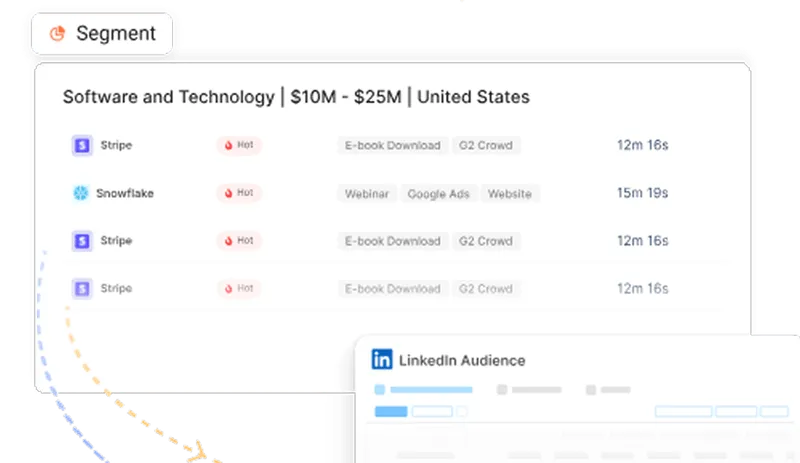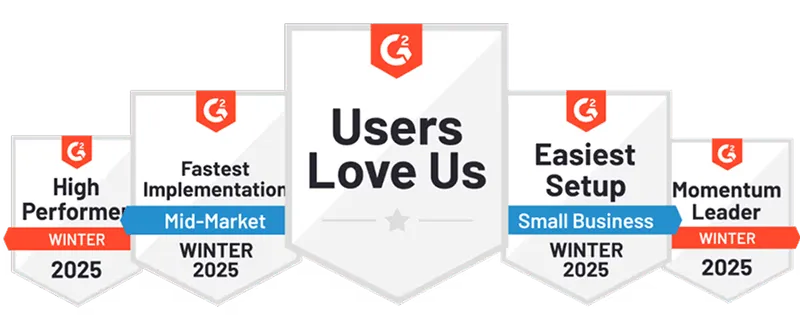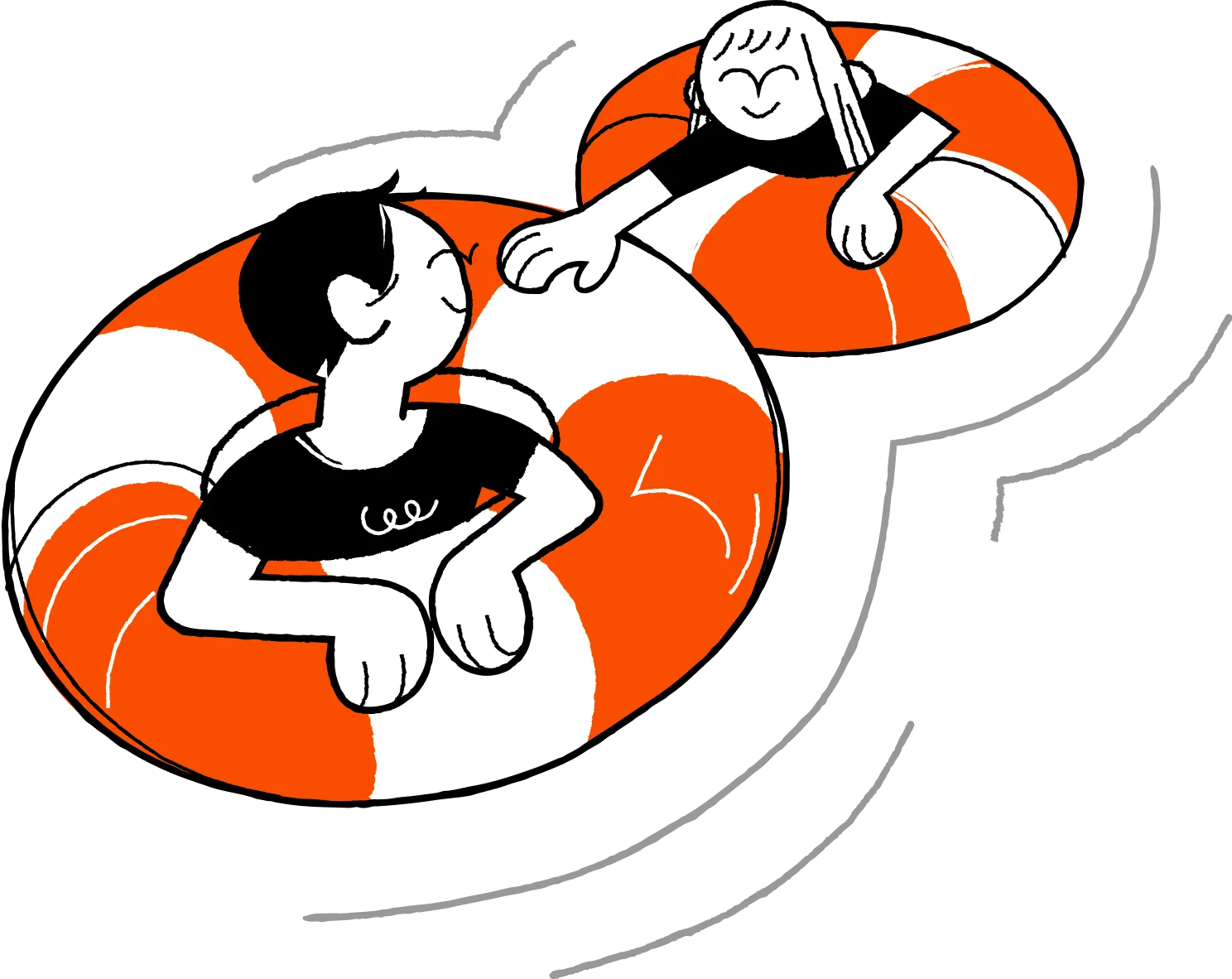B2B Marketing Funnel vs. B2C Marketing Funnel: 15 Critical Differences That Drive Conversion
Learn the critical differences between B2B and B2C marketing funnel and how to optimize your B2B funnel for higher conversions and better ROI.
If you've attempted to apply a B2C marketing strategy to a B2B audience, you've likely encountered challenges. Selling consumer goods differs greatly from marketing enterprise solutions. When campaigns falter, leads dwindle, and sales cycles extend, it can impact revenue and team morale.
The root of this issue lies in not recognizing the fundamental differences between B2B and B2C marketing funnels. While both aim to convert prospects into customers, their paths, motivations, and methods diverge significantly. B2B sales funnels are longer, involve more decision-makers, and require greater trust and education. In contrast, B2C funnels are quicker, focusing on emotional impact and targeting individuals ready to make swift decisions.
By recognizing these fundamental differences, you can tailor your strategy to shorten sales cycles, boost conversion rates, and drive consistent growth. This guide breaks down the 15 most crucial distinctions between B2B and B2C marketing funnels, providing you with clear insights and actionable tactics to enhance your B2B performance. Whether you’re struggling with low-quality leads, sluggish deal velocity, or leaky pipelines, you’ll find practical steps to level up your approach.
Let’s dive into what truly separates top-performing B2B marketers from the rest.
TL;DR
- Cycle & Decision: B2B deals span months and require multiple approvals; B2C deals close quickly with individual decisions.
- Content & Nurture: B2B uses educational, multi-touch nurturing; B2C relies on emotional, impulse-driven campaigns.
- Value & Cost: B2B conversions are fewer but high-value (higher CPL); B2C drives volume with lower-value, lower-cost leads.
- Sales & Channels: B2B depends on direct sales outreach and LinkedIn/webinars; B2C leans on digital self-service and social ads.
What is a Marketing Funnel?
A marketing funnel maps how prospects move from first hearing about your brand to becoming loyal customers. Picture it as an inverted pyramid:
- Awareness: You cast a wide net, ads, content, and social posts, to attract potential buyers.
- Interest: Prospects seek more information, blog posts, webinars, or product pages, to learn how you solve their problem.
- Consideration: They compare options, download case studies, or attend demos to evaluate your fit.
- Intent & Evaluation: Qualified leads request quotes, trials, or meetings, signaling readiness to buy.
- Purchase: A deal closes; the funnel narrows to those who are most likely to convert.
In B2B, this buyer journey often spans months, involves multiple stakeholders, and demands targeted education at each step. In B2C, decisions move faster and are usually driven by emotional or impulse-based triggers.
By tracking drop-off points and tailoring content at every stage, you can optimize your funnel, aligning sales and marketing, shortening sales cycles, and boosting conversion rates.
B2B Marketing Funnel vs. B2C Marketing Funnel: A Quick Overview
Both B2B and B2C marketing funnels map the journey from initial contact to purchase, but they differ in structure, speed, and complexity. Understanding these differences is essential for optimizing marketing efforts and boosting conversions.
B2B marketing funnels target other businesses and typically involve a longer process, often lasting several months. Multiple stakeholders are involved, each with unique needs. The funnel usually comprises six stages: awareness, interest, consideration, intent, evaluation, and purchase. Each stage requires specific content and engagement, as buyers seek detailed information, case studies, and proof of ROI. The goal is to build trust, nurture relationships, and guide prospects through a thorough evaluation.
B2C marketing funnels focus on individual consumers, with a much shorter journey, sometimes just minutes or days. The funnel typically includes four stages: awareness, interest, desire, and action. Decisions are often made emotionally or impulsively, with fewer people involved and less need for detailed information. The aim is to create a seamless and engaging experience that facilitates quick decisions, often through the use of persuasive messaging, special offers, and easy checkouts.
Both funnels aim to convert leads into customers, but the audience's needs and actions shape the path. B2B funnels require patience, personalization, and ongoing care, while B2C funnels rely on speed, simplicity, and emotional appeal. Understanding these differences is key to crafting an effective marketing strategy.
15 Critical Differences Between B2B Marketing Funnel and B2C Marketing Funnel
Recognizing the unique characteristics of B2B and B2C marketing funnel is crucial for enhancing your strategy and boosting conversion rates.
Here are 15 key differences that define each funnel and their significance for your business:
- Funnel Structure and Stages
B2B funnels typically span six stages: awareness, interest, consideration, intent, evaluation, and purchase, reflecting the extended evaluation process that occurs before a purchase is made. B2C funnels are shorter, typically progressing from awareness to action in just four steps, emphasizing speed and simplicity. - Sales Cycle Duration
B2B sales cycles are lengthy and deliberate, often stretching over weeks or months due to research, negotiations, and internal approvals. B2C cycles are typically short and transactional, frequently completed within minutes to days. - Decision-Making Process
B2B purchases are logic-driven, involving risk analysis, budget justification, and ROI projections. B2C decisions often rely on emotions, desires, or personal needs. - Number of Stakeholders
B2B buying decisions typically involve multiple stakeholders, including procurement, finance, IT, and end users. In B2C, there’s usually just one buyer, leading to quicker decisions. - Lead Qualification and Nurturing
B2B funnels use lead scoring, segmentation, and personalized follow-ups to guide prospects down the funnel. B2C strategies focus more on capturing interest and triggering fast conversions through engaging CTAs and offers. - Content Strategy and Messaging
B2B content is educational, technical, and trust-building, like whitepapers or case studies. B2C content is often visual, bite-sized, and emotionally resonant, like social videos, reviews, or lifestyle imagery. - Emotional vs. Rational Triggers
B2B buyers are influenced by practicality, ROI, and long-term gains, while B2C buyers respond to personal emotions, aesthetics, and immediate satisfaction. - Average Deal Size and Transaction Value
B2B deals are high-value and long-term, often requiring contractual commitments. B2C purchases are usually lower-ticket and one-time, with faster checkout processes. - Conversion Rates at Each Funnel Stage
B2B funnels have lower but more valuable conversion rates, as each lead is highly qualified. B2C funnels rely on higher volume and faster movement through stages. - Cost Per Lead and Customer Acquisition Cost (CAC)
B2B CAC is higher due to longer nurturing, specialized sales efforts, and content investments. B2C CAC is generally lower, but requires higher traffic and more conversions to achieve the same value as B2B. - Role of Sales Teams
B2B depends heavily on sales reps and account managers to guide prospects and close deals. B2C often uses self-service portals, online stores, and direct-response campaigns to drive sales. - Channel Preferences and Touchpoints
B2B buyers engage with LinkedIn, webinars, email, and events for insights. B2C buyers are more active on Instagram, YouTube, TikTok, and search ads, driven by lifestyle and trend content. - Use of Automation and Technology
B2B funnels utilize marketing automation, CRM systems, and intent data to deliver personalized nurturing and enhance pipeline visibility. B2C funnels utilize real-time automation for swift actions, including flash sales, retargeting, and loyalty perks. - Post-Purchase Relationship and Retention
B2B brands focus on long-term retention through support, renewals, and ongoing value delivery. B2C brands aim for repeat sales through loyalty programs, discount codes, and personalized offers. - Measurement and Funnel Optimization
B2B success is tracked with multi-touch attribution, account engagement, and pipeline velocity. B2C is more focused on click-through rates, conversion rates, and customer lifetime value, with quicker campaign feedback loops.
By understanding these distinctions, you can build a marketing funnel that aligns with your audience’s behavior, expectations, and decision-making style, maximizing both efficiency and impact.
How to Adapt Your B2B Marketing Funnel for Higher Conversions?
To enhance conversions in your B2B marketing funnel, focus on the specific needs of business buyers. Here’s how to optimize each stage for better outcomes:
1. Engage Stakeholders:
B2B decisions involve multiple people. Identify key stakeholders early and create content and outreach tailored to each role: technical, financial, and executive, to address their concerns and needs.
2. Qualify Leads:
Not all leads are equal. Use lead scoring based on company details, engagement, and buying intent. This helps your sales team focus on promising accounts, saving time, and boosting conversions.
3. Provide Educational Content:
B2B buyers conduct extensive research before contacting sales. Offer detailed guides, case studies, and webinars that answer their questions and build trust. Ensure your content is available at every funnel stage, from awareness to decision.
4. Personalize Nurturing:
Long sales cycles require ongoing nurturing. Use marketing automation to send personalized emails, retargeting ads, and relevant resources based on each lead’s stage and actions. This keeps your brand top of mind and moves prospects closer to a decision. Learn more about Workflow Automations to streamline this process.
5. Align Sales and Marketing:
Ensure your sales and marketing teams collaborate effectively. Share insights, feedback, and data to improve messaging and outreach. A unified approach ensures a seamless transition from marketing-qualified leads to sales-qualified leads. Explore how our Account Intelligence can help with this alignment.
6. Measure and Improve:
Track funnel metrics like conversion rates and content performance. Use these insights to test and refine your strategy, keeping your B2B marketing funnel aligned with the evolving needs of buyers and market changes. For detailed analytics, visit our Funnel Conversion Optimization page.
By focusing on these steps, you’ll build a B2B marketing funnel that attracts quality leads and guides them efficiently toward conversion.
B2B vs. B2C Wrap-Up
Understanding the differences between B2B and B2C marketing funnel is essential for achieving tangible results. The B2B funnel is more complex, with longer sales cycles and multiple decision-makers, focusing on education and relationship-building. In contrast, B2C funnels focus on achieving quick engagement and generating fast sales.
If you manage a B2B funnel, adjust your strategies accordingly. Nurture leads over time, provide detailed content for each decision-maker, and ensure smooth coordination between sales and marketing. Track key metrics such as lead quality, conversion rates, and customer acquisition costs.
A one-size-fits-all approach won't work. By understanding the 15 key differences outlined in this guide, you can build a B2B funnel that attracts the right prospects and guides them to conversion.
Successful B2B marketers optimize their funnel using real data and feedback. Keep your customer's journey central and use tools that offer actionable insights. With the right approach, your B2B funnel can drive growth and lasting business relationships
See how Factors can 2x your ROI
Boost your LinkedIn ROI in no time using data-driven insights


See Factors in action.
Schedule a personalized demo or sign up to get started for free
LinkedIn Marketing Partner
GDPR & SOC2 Type II
.svg)









